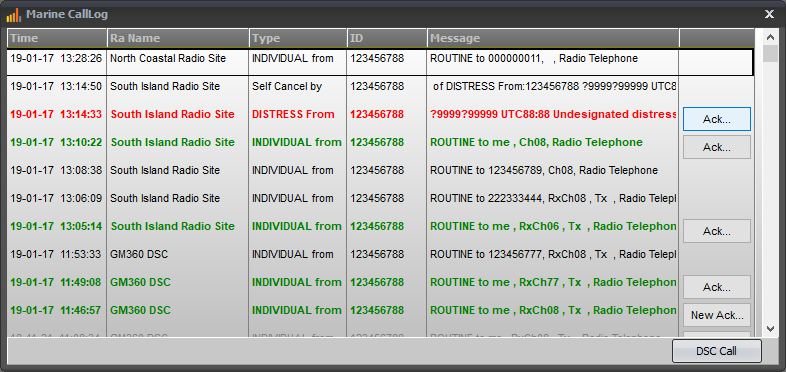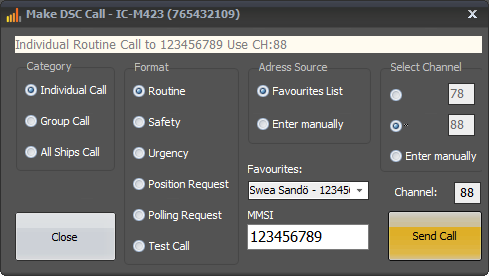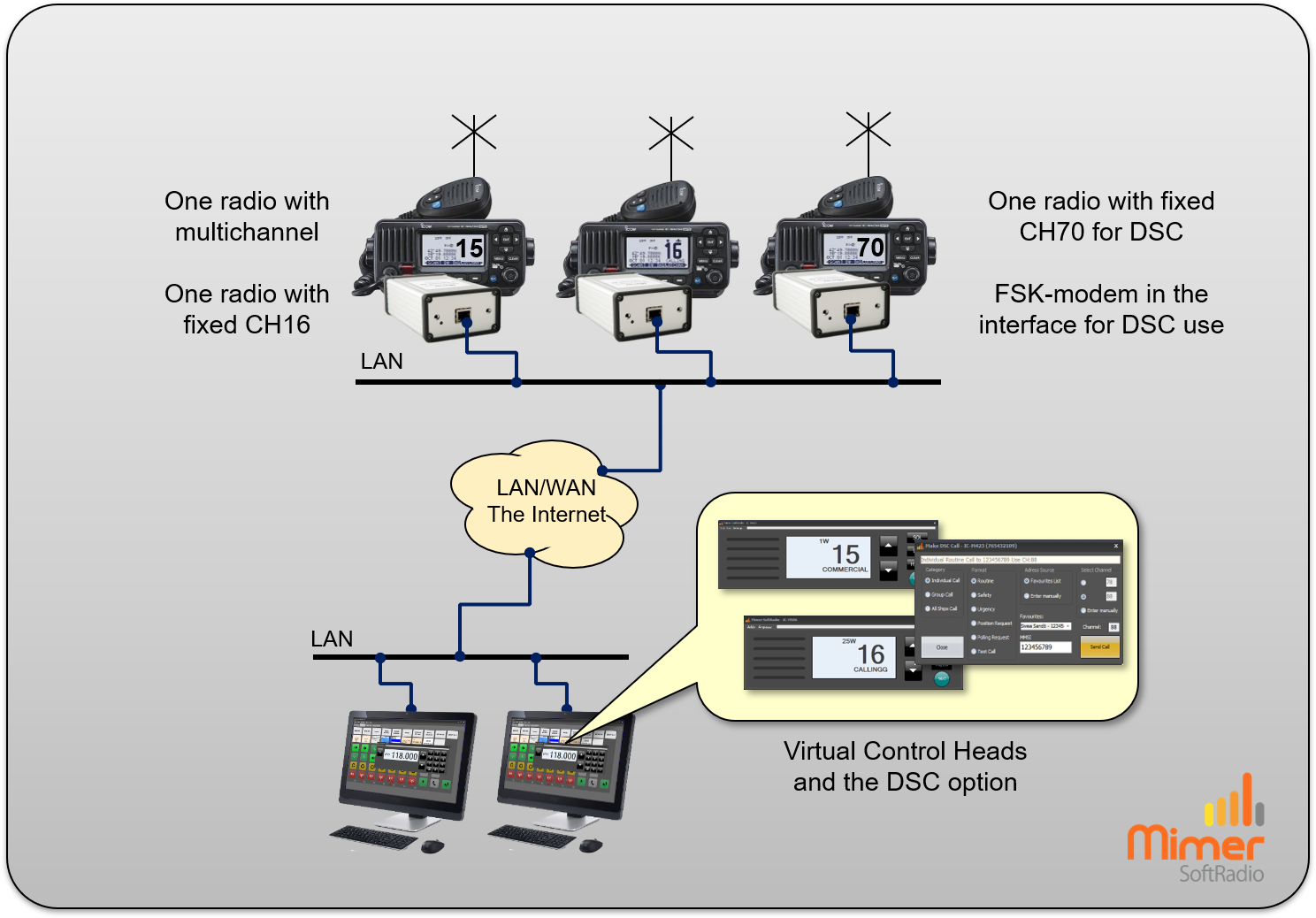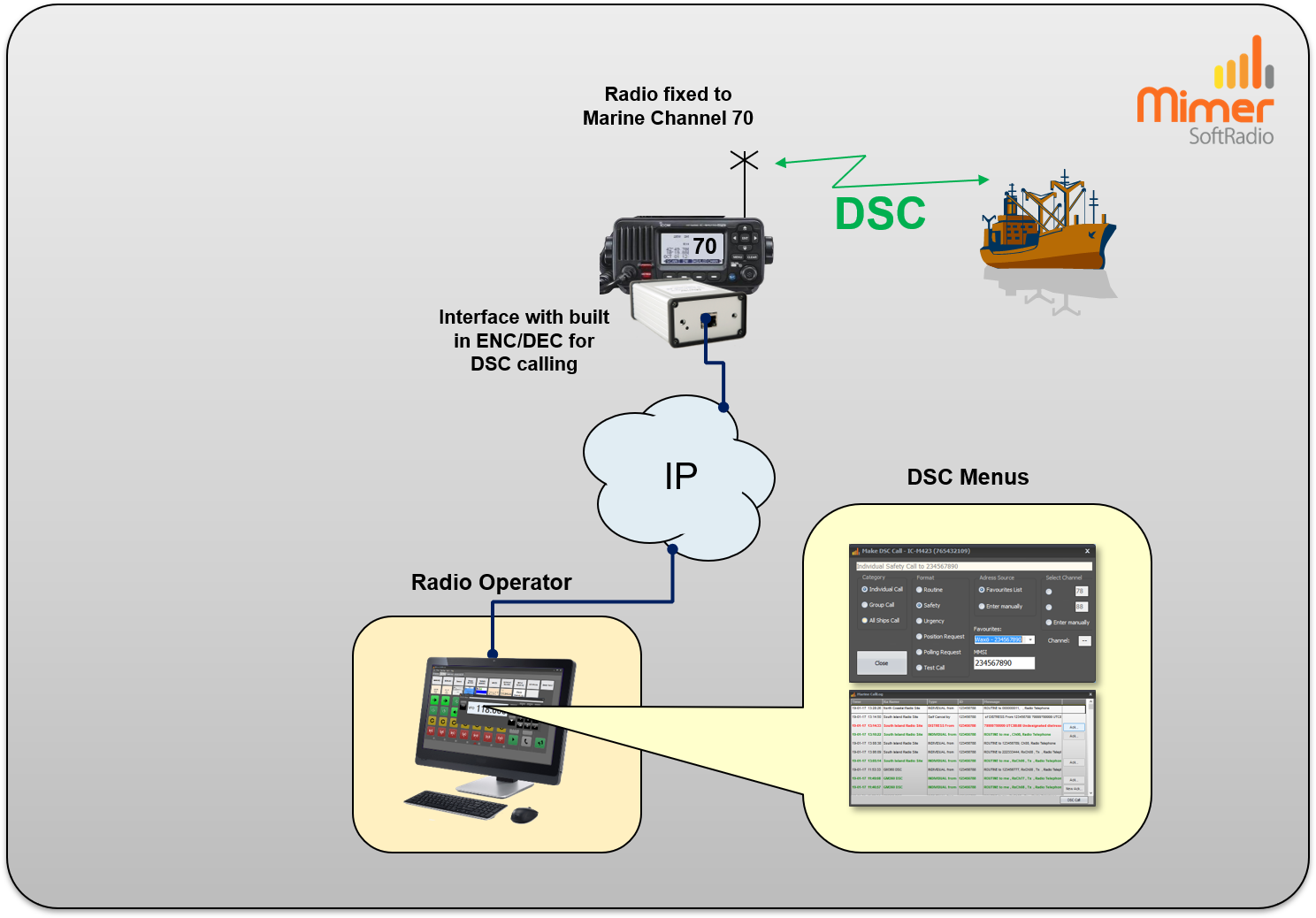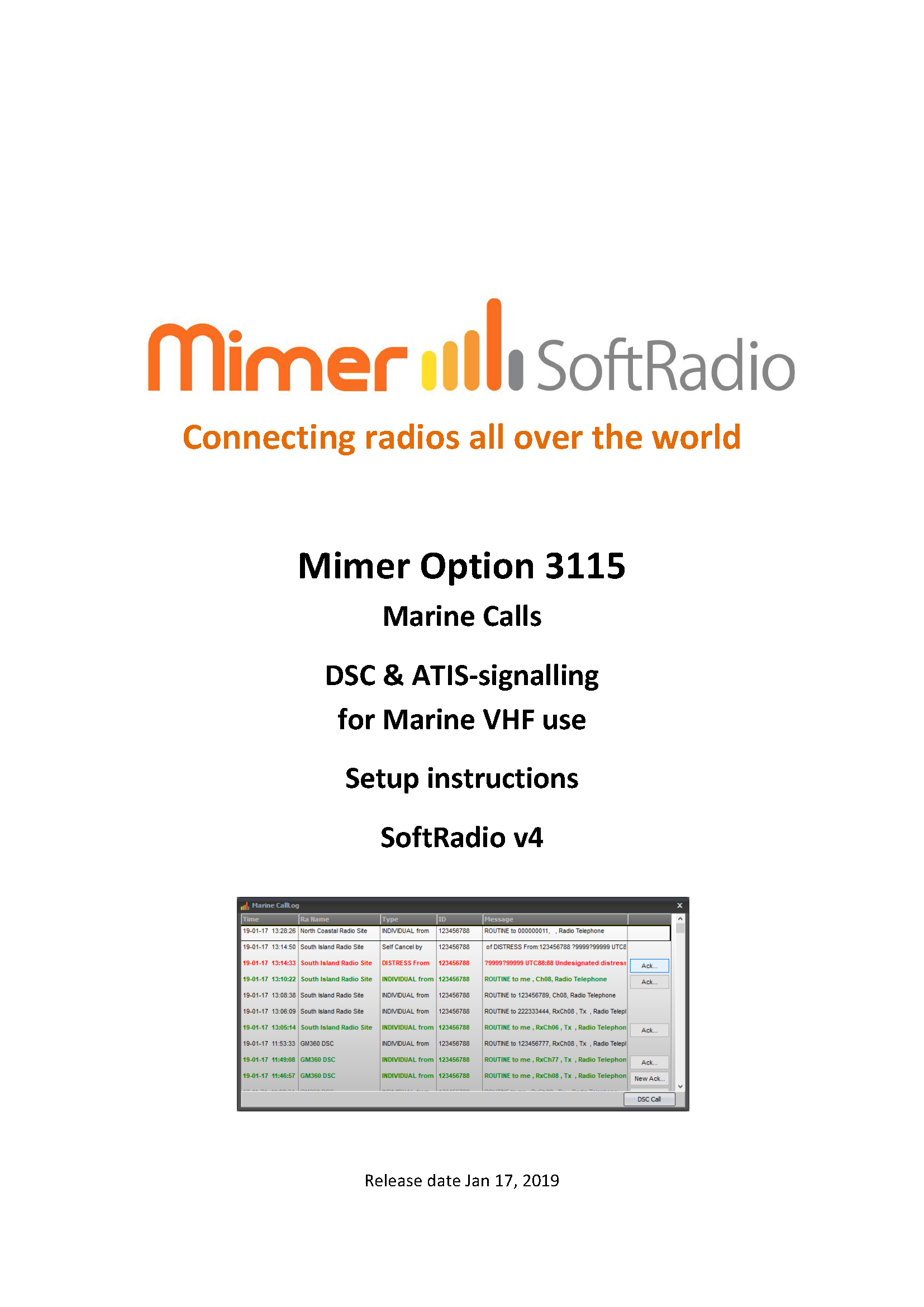Mimer MarineCalls
Option 3115 to receive and transmit DSC calls and to receive ATIS calls.
With this option to SoftRadio your dispatcher will be able to receive and log both DSC calls and ATIS calls and also be able to send DSC calls and responses to incoming calls. The option is suitable for harbours, coast stations, oil rigs and many more.
The calls are presented to the operator and also logged on the operators harddrive in a separate file for each day.
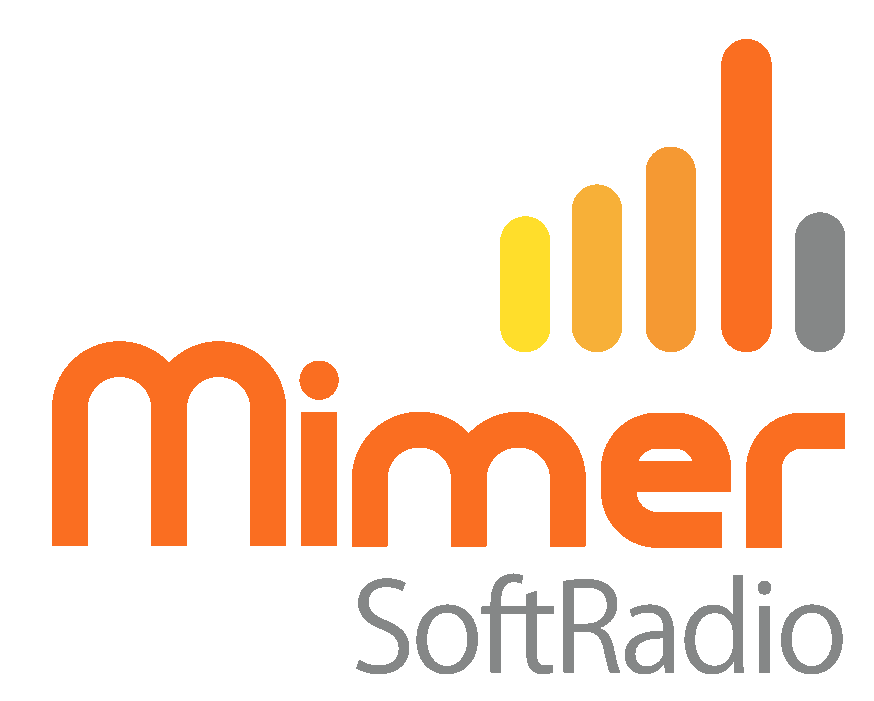
Receiving DSC and ATIS
Incoming radio calls that includes the coding for DSC or ATIS will be displayed in the Marine CallLog at the dispatcher. (Example above)
The different call types will be displayed in plain text and with helping colours to differentiate for example emergency calls. Emergencies can also have an extra alert sound.
All calls are displayed with a time stamp and the origin of the call. Showing ID of the caller and which radio in the SoftRadio system that decoded the call.
Calls that can be, or shall be, acknowledged will have an “Ack”-button for fast use.
Example of Marine CallLog with different types of calls logged.
The Dispatchers MMSI number
SoftRadio does not use the built in (if any) DSC decoder in the radios. Marine Calls is a separate system inside SoftRadio. This means that the MMSI number is not related to the radio itself, it is setup for each dispatcher in the system. Making the system much more flexible.
From v4 of SoftRadio it is possible to set up the system so that each operator listens to more than one MMSI number. This can for example be set so that a DSC radio at one site has one MMSI and a DSC radio at another radio site has a different MMSI.
Dispatchers using the same DSC radios can have the same MMSI numbers for each radio or have different numbers for each radio.
Transmitting DSC
DSC calls are easily sent from a small window where you select the different possible types of call and enter a number to call. You can also enter a channel, together with the call, that you want the responder to set on his radio, to be used for voice communication.
After all is set you just press the “Send Call” button.
Menu for entering a DSC call
Answering DSC
Some DSC calls needs to have an acknowledge. When such a call is recieved an “Ack”-button will appere next to the call.
You will then get the choice to send the acknowledgement right away, change the channel that the caller suggested or to send “Unable to comply”, if you can´t respond.
You can send the acknowledge more than one time if needed. And also change parameters for the new acknowledge.
ATIS Export, Option 3151
There is an extra software that exports the ATIS information to third party applications. This is useful when you have GIS systems presenting ships on a chart. You might then highlite the ship that is transmitting.
"ATIS Killer"
Since ATIS messages are sent out on the voice channel, they will normally be heard by the other part in the conversation. To prevent the ATIS message from being played in the loudspeaker, on SoftRadio, a special circuit detects and “kills” the ATIS audio.
Logging of calls
All incomming calls are logged in a locally stored log file on the operators PC. A new file is started every 24 hours.
The information shows which fixed radio the call came in on, the time and date, and the type of call.
Example of log file of saved calls. There is one file for each day.
Mimer MarineCalls are used by the offshore industry
Usage example
A common setup is to have three separate radios. One used only for CH16, one with multichannel and one dedicated for CH70 (DSC).
The DSC radio will not be shown in SoftRadio, it is used in the background.
One radio needs to be fixed to CH70 and the interface be equipped with a ENC/DEC fo the DSC signalling.
In SoftRadio you set your own
MMSI number or numbers.
There is a brochure on all options and extras available on the download page.
There is a setup instruction available on the technical download page.
Use any radio
You can use any analogue radio in the Marine VHF band. You are not limited to the types that are normally used for marine radio traffic.
For example Motorola MotoTrbo, Icom, Kenwood or Hytera radios.
Please note
To be able to use the DSC and ATIS functions the radios network interface needs to be fitted with an FSK-modem, article: 3095.
And to be able to send and receive DSC messages the radio needs to be set to CH70.
Not for onboard use!
At the moment this option is not suitable for onboard use, since there is no function implemented to send a distress call.
What is DSC and ATIS?
DSC
Digital Selective Calling or DSC is a standard for sending pre-defined digital messages via the medium frequency (MF), high frequency (HF) and very high frequency (VHF) maritime radio systems. It is a core part of the Global Maritime Distress Safety System (GMDSS).
DSC Calls are always exchanged on Channel 70 in the VHF Marine band.
ATIS
The Automatic Transmitter Identification System (ATIS) is a marine VHF radio system used and mandated on navigable inland waterways in Europe for identifying the ship or vessel that made a radio transmission. The identity of the vessel is sent digitally immediately after the ship’s radio operator has finished talking and releases their transceiver’s push-to-talk button.
ATIS Calls are sent on the voice channel.
Most of the text above is borrowed from Wikipedia. More details can be found there.

